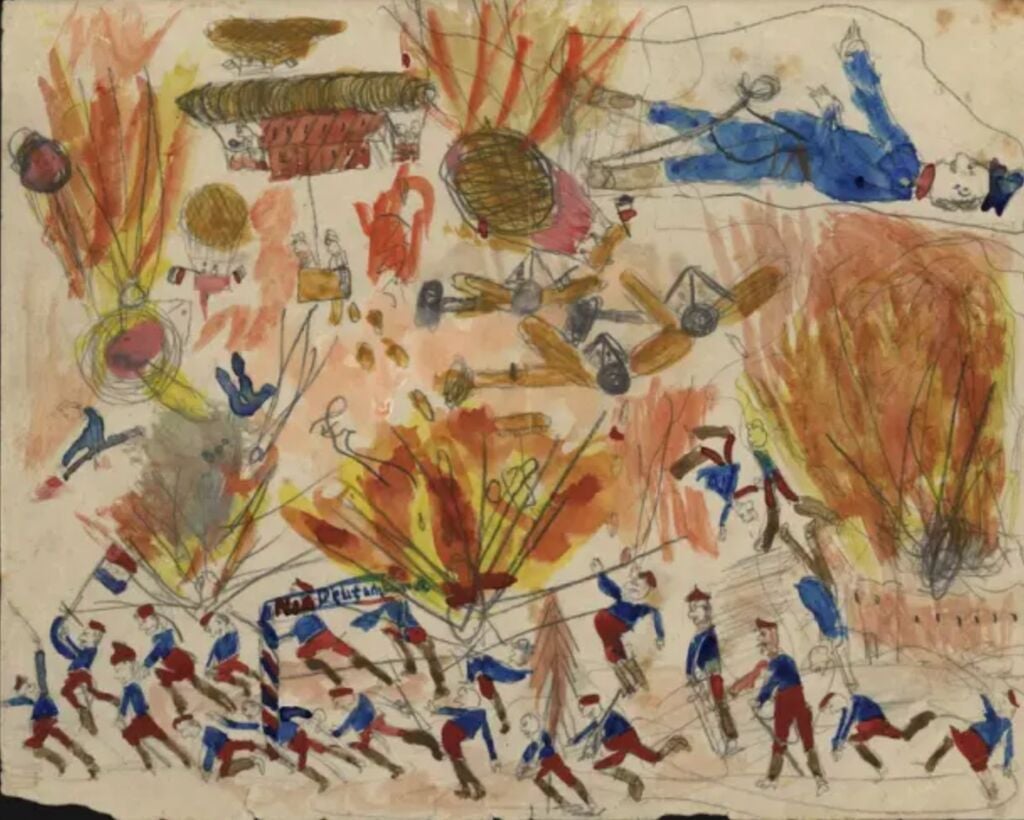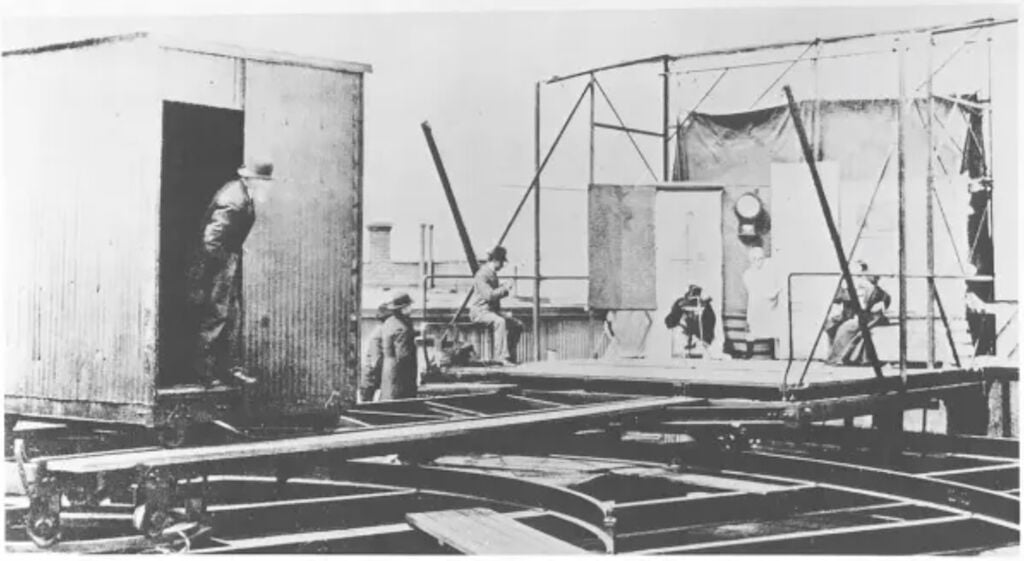Two transnational properties supported by the UK inscribed onto the UNESCO International Memory of the World Register
In April, the UNESCO Executive Board adopted the inscription of two transnational nominations, 'Drawings and writings of children during wartime in Europe: 1914-1950' and 'The large format 68mm films of the Mutoscope & Biograph Company', onto the UNESCO International Memory of the World Register.
These nominations had been submitted in November 2023 by France in conjunction with other countries including the United Kingdom.
This collection of documents, drawings, paintings, and writings by young people - along with two youth journals - depict key “wartime” events and their aftermath. Through their creativity, rich motifs and direct language, these documents transcend national borders, offering possibilities for dialogue and compassion. They serve as a democratic heritage of urban and rural cultures across Europe, created by boys and girls of different ages and social classes.
This inscription includes the Franz Cizek Collection, held as part of the National Arts Education Archive (NAEA) located at Yorkshire Sculpture Park (YSP). For more than seven years, YSP was involved in a pan-European initiative on this nomination. Coordinated through the International Research and Archives Network (IRAND), this nomination brings together 17 collections from across Europe, highlighting the voices and creativity of children who lived through the upheavals of the First and Second World Wars.
Speaking of the inscription, Clare Lilley, Director of Yorkshire Sculpture Park said:
“We are deeply honoured that the children’s artwork in our care has been recognised by UNESCO as part of the world’s documentary heritage. This inscription not only celebrates the extraordinary vision of Franz Cižek and the children he taught but also affirms the vital role that Yorkshire Sculpture Park and the NAEA play in preserving and sharing stories that matter."
The large format 68mm films of the Mutoscope & Biograph Company
The 68mm Mutoscope and Biograph films are among the earliest motion pictures ever created and projected. They represent a historically innovative film technology, developed in 1896. These large format films are preserved at Eye Filmmuseum (Amsterdam), the British Film Institute (London), the Museum of Modern Art (New York), the Cinemathique Française (Paris) and the Centre National du Cinema et de l'image animee (Bois d’Arcy) since the 1960s.
Because the Mutoscope and Biograph camera operators travelled the world, these films constitute a first-hand testimony to the past. They document places, people, events, and customs that captured the interest of the time, while narrating fictional stories that display the common behaviour and relations between people of different cultures, ages, classes and professions.
Further information on the large format films held at the British Film Institute
These new documentary heritage items join the twenty or so French items already inscribed on the International Memory of the World Register, including the Appeal of June 18, 1940, the Angers Apocalypse Tapestry, the Albi Mapa Mundi, and the restored negatives of Claude Lanzmann's Shoah.
The Memory of the World programme, created by UNESCO in 1992, aims to protect and disseminate documentary heritage in all its diversity, in order to "avoid collective amnesia and promote the preservation of archival and library collections throughout the world."
More than 500 documents and documentary collections from five continents in various formats (printed, graphic, audiovisual, and digital) make up the International Register.
In April, seventy-four applications were selected for addition to the International Register, including the 'Documentary heritage relating to the life and work of Charles Darwin', submitted by the United Kingdom of Great Britain and Northern Ireland.









